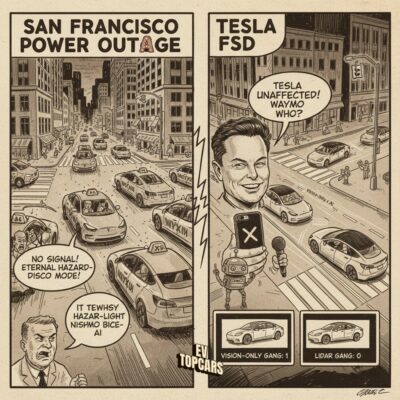1. How Does an Electric Car Work?
Before talking about how electric vehicles work, it is necessary to know what type of EVs are referred to when “electric vehicles” are mentioned. Because the way vehicles operate is determined by their types, and sometimes electric vehicles may mean hybrid (HEV) or fuel cell (FCEV) automobiles. In the rest of this article, we will be discussing fully electric vehicles called battery electric vehicles (BEV).
1.1. Basic Working Principle of Battery Electric Vehicles
The basic working principle of BEVs is basically based on the conversion of electricity from the battery into mechanical energy. In this process, which is carried out through two motor parts, one fixed (stator) and one moving (rotor), the process works as follows:
- The electrical energy stored in the batteries is transferred to the stator.
- Electromagnetic field is created thanks to the electrical energy transferred to the stator.
- The rotor, which is the moving part of the motor, starts to rotate around the fixed stator.
- Mechanical energy is released by the rotation of the rotor.
Battery electric vehicles do not require as many components as in conventional vehicles. In this way, during the energy transmission between the parts, there is not as much energy loss as in vehicles with internal combustion engines.
2. What are Electric Vehicle Parts?
Unlike conventional cars, electric vehicles have electric motor, battery and charging electronics; There are not many parts such as the gearbox, clutch pad, gas tank and exhaust system.
2.1. Electric motor
Electric motors, which are the core part of BEVs, convert about 95 percent of the electrical energy from the battery into motion energy, enabling the vehicle to move. Considering that this rate is about 30 percent in internal combustion engines, it becomes clear how efficient electric motors are.
2.2. Battery (Pull Battery)
Lithium-ion batteries are mostly used in electric vehicles. A BEV contains many batteries. Batteries serve to store energy for use by the electric motor. Batteries, which are usually placed on the floor of the vehicle to prevent the trunk from shrinking, pull the center of gravity down, increasing the vehicle’s handling ability and allowing a more balanced ride.
2.3. Current Converter (DC/DC)
The current converter converts the high-voltage DC power from the battery to the low-voltage DC power needed to power the vehicle accessories and charge the spare battery.
Learn More: What are the Environmental Effects of Electric Vehicles?
2.4. Backup Battery
The backup battery provides backup power to perform the vehicle’s audio system and brake booster features. It also helps the vehicle to operate safely by activating in case of battery failure.
2.5. Car Charger Unit
Two types of current can be used in electric vehicles: AC (Alternating Current) and DC (Direct Current). While the power from the grid is always AC, the batteries can only store the power as DC. Therefore, a unit that converts between AC and DC is needed to charge the batteries.
2.6. Charge Input
The charging port allows the vehicle to be connected to an external power source to charge the battery.
2.7. Controller (Controller)
Working like a brain that controls all the components of the vehicle, the controller manages the flow of electrical energy supplied by the battery, controlling the speed of the engine and the torque it produces.
2.8. Temperature Control System
This system helps maintain the proper temperature for the engine and other components.
2.9. Energy Saving Brake
In BEVs, an energy recovery mechanism called regenerative braking is used, which allows the energy spent by the vehicle to slow down or stop, to be stored in the battery. This makes BEVs much more efficient than conventional vehicles.
Learn More: How is Electric Car Inspection Performed?
2.10. Transmission
Transmission (Single-speed gearbox) transfers the mechanical energy from the electric motor to the wheels, enabling the vehicle to run.










1 Comment
How is Electric Car Inspection Performed?
What are the Environmental Effects of Electric Vehicles?